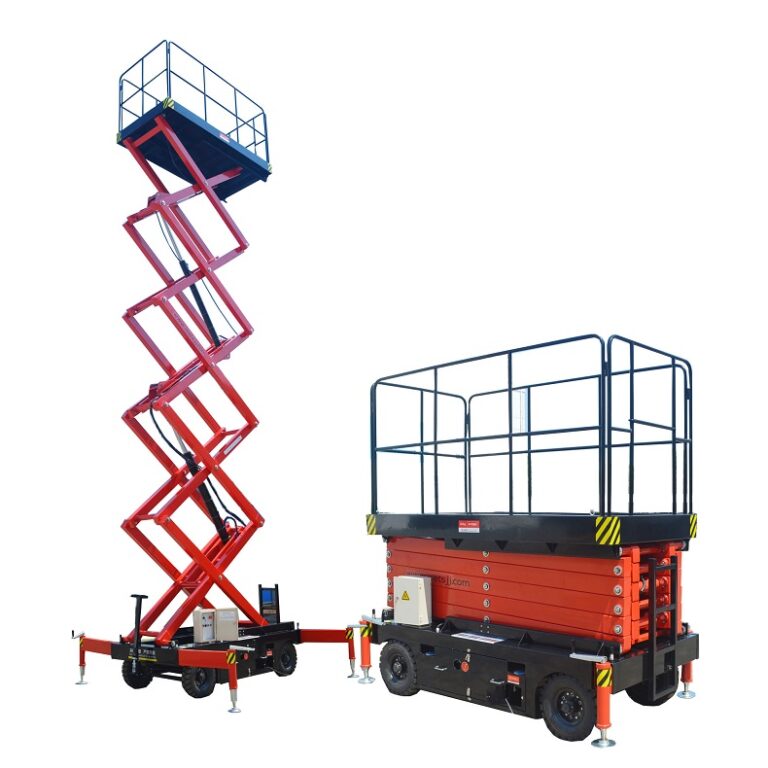The Evolution of Autonomous Vehicles: From Concept to Reality
Autonomous vehicles (AVs) have transitioned from a futuristic concept to a tangible reality, revolutionizing the transportation industry. This evolution reflects advancements in technology, changes in societal attitudes, and the continuous push for innovation. Let’s explore the journey of autonomous vehicles from their inception to their current status as a transformative force in mobility.
Early Beginnings: The Conceptual Phase
The idea of self-driving cars has been around for decades, often depicted in science fiction. Early experiments in the 20th century laid the groundwork for modern AVs. In the 1980s, projects like Carnegie Mellon University’s Navlab and Mercedes-Benz’s Eureka Prometheus paved the way for the development of autonomous driving technology. These early efforts focused on basic navigation and obstacle avoidance, setting the stage for future advancements.
 forklifts scissor aerial platform | China Trade price on Manufacturer Wholesale scissor aerial platform Materials Handling Platforms sale Buy Online Industrial Equipment
forklifts scissor aerial platform | China Trade price on Manufacturer Wholesale scissor aerial platform Materials Handling Platforms sale Buy Online Industrial Equipment
Technological Breakthroughs: The Rise of AI and Sensors
The late 20th and early 21st centuries saw significant technological breakthroughs that propelled the development of AVs. The advent of artificial intelligence (AI), machine learning, and advanced sensor technologies such as LiDAR, radar, and cameras enabled vehicles to perceive and interpret their surroundings with unprecedented accuracy. Companies like Google (now Waymo) and Tesla emerged as pioneers, demonstrating the potential of AVs through extensive testing and real-world deployments.
Regulatory and Ethical Challenges
As AV technology advanced, regulatory and ethical challenges emerged. Governments and regulatory bodies worldwide grappled with creating frameworks to ensure the safe deployment of AVs. Issues such as liability in case of accidents, data privacy, and cybersecurity became focal points of discussion. Ethical considerations, including decision-making in life-and-death scenarios, also posed significant challenges. These debates continue to shape the regulatory landscape for AVs.
Real-World Applications: From Testing to Deployment
The transition from testing to real-world deployment marked a significant milestone in the evolution of AVs. Companies like Waymo, Uber, and Cruise began conducting extensive pilot programs in various cities, gathering valuable data and refining their technologies. Autonomous ride-hailing services, delivery robots, and self-driving trucks started to become a reality, showcasing the practical applications of AV technology in everyday life.
Public Perception and Adoption
Public perception and acceptance of AVs have played a crucial role in their evolution. Initial skepticism and concerns about safety have gradually given way to curiosity and optimism. Educational campaigns, transparent communication from AV companies, and successful pilot programs have helped build public trust. However, widespread adoption still faces hurdles, including the need for robust infrastructure, public awareness, and addressing the digital divide.
The Future of Autonomous Vehicles
The future of AVs holds immense promise. Continued advancements in AI, connectivity, and vehicle-to-everything (V2X) communication are expected to enhance the capabilities of AVs. The integration of AVs into smart city ecosystems, where vehicles communicate with traffic signals, pedestrians, and other infrastructure, will further optimize urban mobility. Additionally, the potential for AVs to reduce traffic congestion, lower emissions, and improve road safety presents a compelling case for their widespread adoption.
Conclusion: A Transformative Force in Mobility
The evolution of autonomous vehicles from a conceptual idea to a transformative force in mobility is a testament to human ingenuity and technological progress. As AV technology continues to mature, it promises to reshape the transportation landscape, offering safer, more efficient, and sustainable mobility solutions. The journey of AVs is far from over, and the coming years will undoubtedly bring even more exciting developments in this dynamic field.
